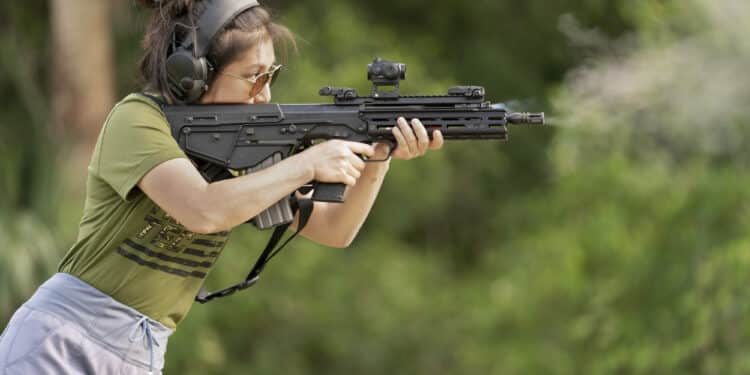By Oleg Volk –
Bullpups have been around forever, first as oddities, then as mainstream military rifles. At this time, about half of the world’s armies use them, and one – Poland – splits the difference by providing the Grot rifle that converts from the conventional form to bullpup and back. Bullpups are great for motorized troops, being short. They work well for unsupported firing, being well balanced. They also have a number of issues, from generally poor triggers, to heat retention, to complicated or right-side only ejection arrangements. They also tend to have long length of pull, which partly negates the benefit of their short overall length.
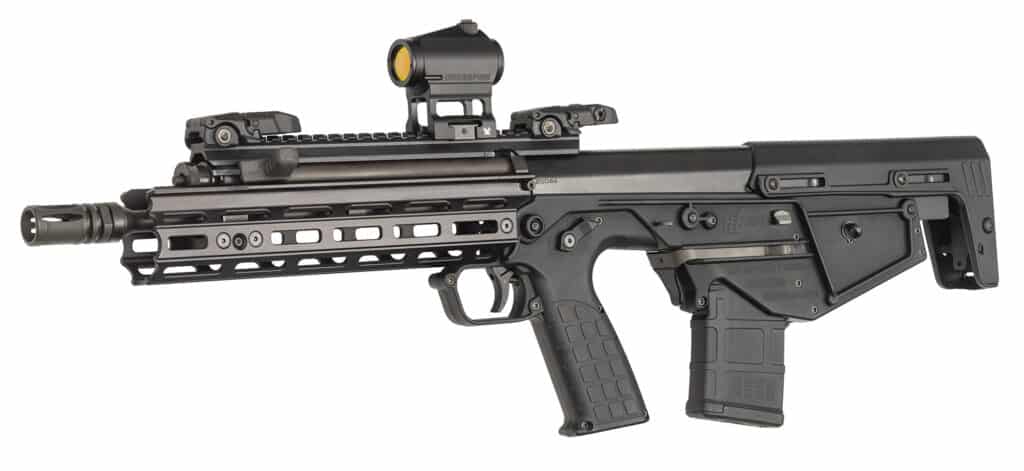
KelTec solved the trigger issue on the excellent .308 RFB by moving the sear next to the trigger, with a long hammer strut to transfer the impact to the firing pin. The ingenious Maxim-like forward ejection chute contributed to the heat retention, so it worked wonderfully as a hunting or home defense rifle but less well as a military gun. To be fair, it was never intended to be a military weapon. The RFB used a fairly heavy barrel as the spine to which the rest of the parts attached, relying on its rigidity to achieve 1-MOA accuracy at the cost of a somewhat hefty, if nicely balanced, rifle. The RFB is also a complex design that requires a highly skilled gunsmith to build. A more mass-producible solution was needed, and thus RDB 5.56 NATO was born.
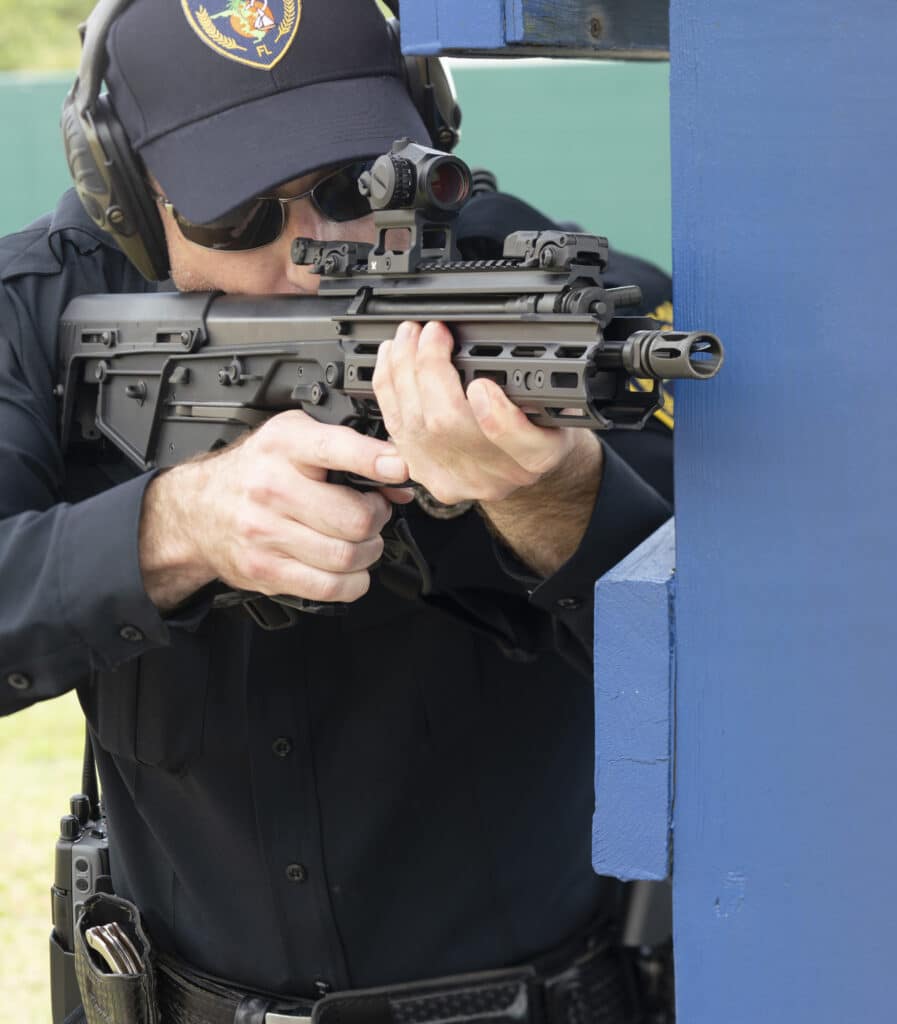
RDB stands for Rifle Downward-ejecting Bullpup. Its development echoes pre-WWI machine gun history: once Vickers produced a modernized Maxim gun, the forward-ejecting chute was replaced with a simple gravity drop from the bottom ejection port. Since then, the Browning, ZB26/Bren, MAG58/M240, and many other machine guns adopted this solution. This approach makes the weapon equally suitable for left and right-hand use and avoids pelting people next to the shooter with hot brass. Removing the ejection chute kicks the spent cases from the gun before they can transfer their heat to the receiver. Uniquely, the RDB’s ejection port is located behind the magazine. The substantial bolt overtravel past the back of the magazine makes for a very long feed cycle, and it’s beneficial in several ways. First, it permits a much lighter bolt and carrier combination than is usual for this caliber: a relatively light recoil spring has more space over which to dampen the recoil. This reduces both the overall weight of the gun and the reciprocating mass, making for more controlled rapid fire. The long bolt travel drops the natural cyclic rate of the select-fire version to a very controllable 500 rpm: at 25 yards I could keep 3- to 4-round bursts in a hand-sized group without relying on a muzzle brake or a compensator. It also gives the magazine spring more time to bring up the next cartridge for feeding. Spread over a longer period, felt recoil is reduced without any special buffers required. Finally, the overtravel means that the bolt going forward develops some speed by the time it picks up the next round, improving feed reliability without having to resort to an extra-heavy recoil spring. The unique U-shaped hammer of this rifle, besides being strongly sprung for a guaranteed impression on the primer, also acts as a recoil retarder. In a genius, space-saving move, the hammer fits around the ejection port when cocked.
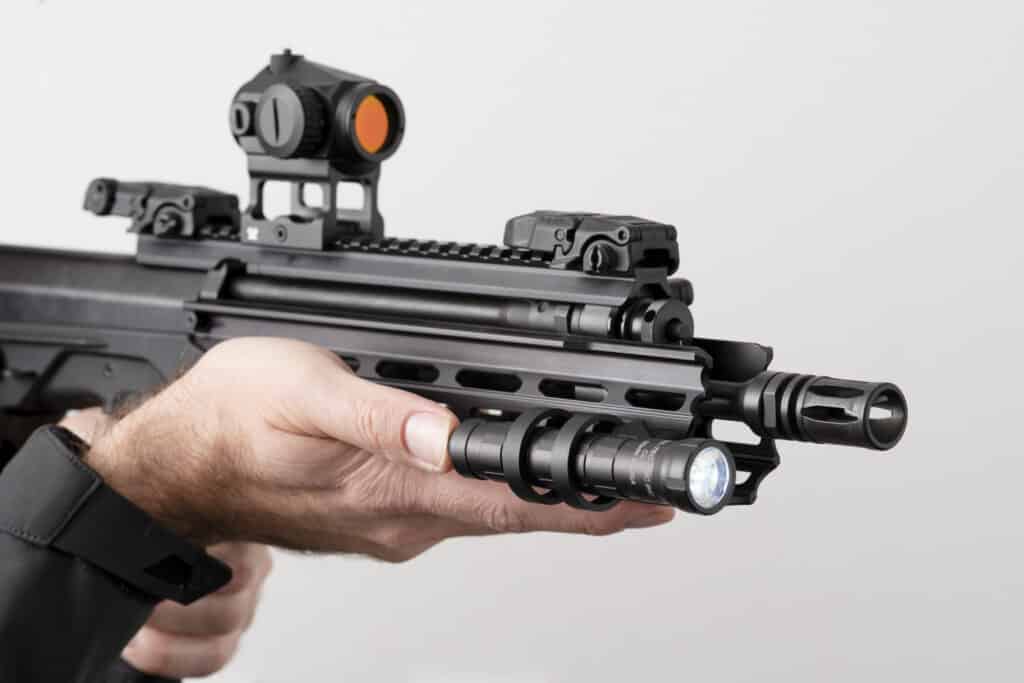
Like the AKM series, the RDB receiver is folded steel sheet, although rather more rigid than the Soviet design for better accuracy. The rotating bolt locks into the AR15-like barrel extension. The RDB barrel is free-floated but rigidly attached to the optic rail. A long action rod protruding from the bolt carrier is actuated by a short tappet piston with its own return spring, a refinement of the reliable SU16 series solution. An adjustable gas block permits the use of sound suppressors, while opened up allows a dirty rifle to run reliably under adverse conditions with poor quality or weak ammunition. The magazine release is a slider. The RDB’s magazine release may be activated by the back of the strong hand, but it’s easier to press it with one or two fingers of the support hand while grasping the magazine with the rest for retention.
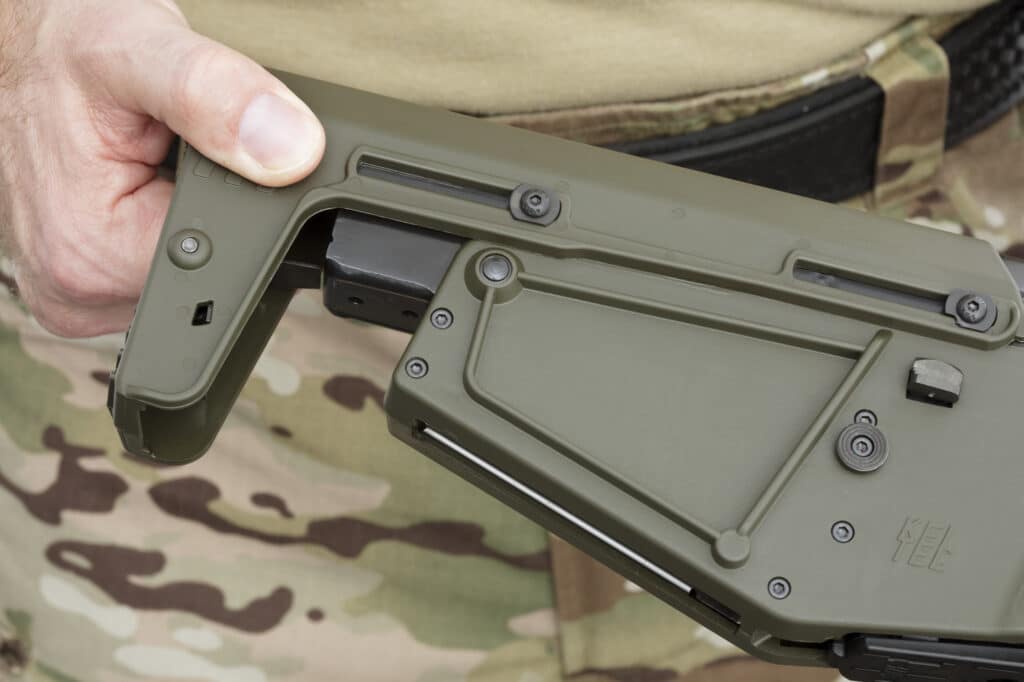
The first RDB concept was based on the early RFB prototype predating the forward ejection. In them, the magazine and the ejection port were side-by side, about 30 degrees apart. The M43, a classic looking prototype done in several calibers had wooden furniture and an AK74 muzzle brake. The brake proved too effective for the already-balanced RDB, actually depressing the muzzle during rapid fire. The ubiquitous AR-15 influenced a version with a machined aluminum receiver and 90-degree safety lever. Eventually, all of these concepts were combined with a non-reciprocating, swappable charging handle and a bolt lock latch, ambidextrous 30-degree safety lever and bolt release, modular plastic furniture, and a threaded muzzle. The first RDB came in two barrel lengths, 20 and 17.3 inches, the odd number due to the regulatory requirement of having the overall lengths exceed 26 inches.
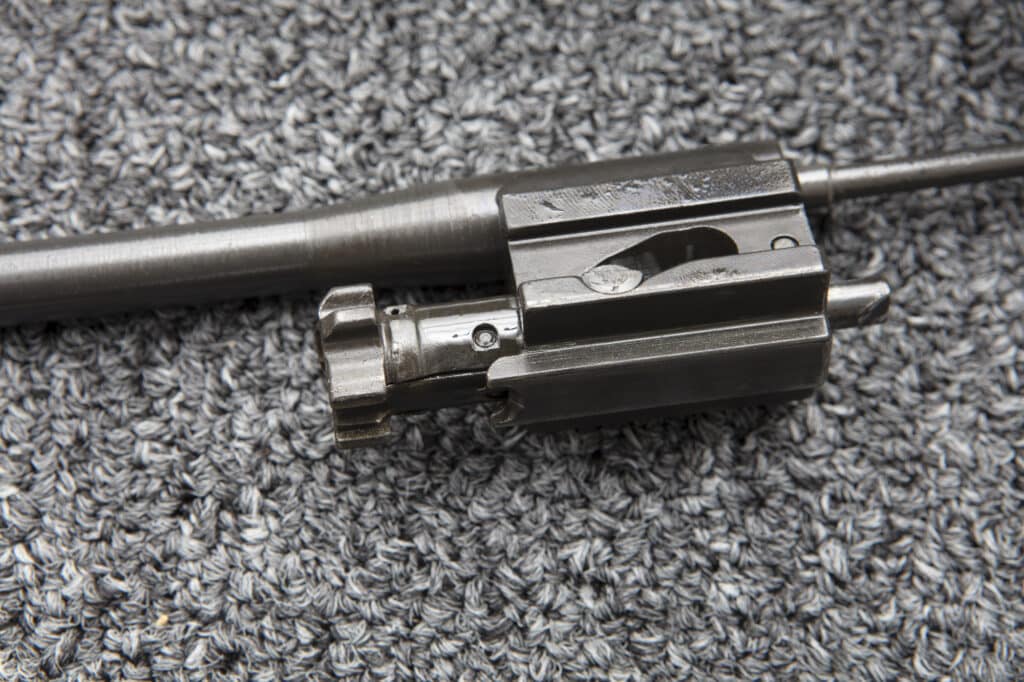
The rifle was an immediate success. The original RDB17 has a 17.3-inch barrel with a flash hider, polymer forend, weighs in at only 7 pounds, yet its medium weight 1:7-inch twist barrel can achieve 1-MOA accuracy with 75- to 77-grain match ammunition. The RDB is capable of 1.5- to 2-MOA with several defensive and hunting loads. The 4-pound trigger is crisp enough for good marksmanship, but marksmen must be careful when firing from a bipod or a sandbag: placing the support hand under the buttstock puts it directly in the path of hot brass. It’s safer to wrap the support hand around the magazine well. Combine this with mild recoil, easy field-stripping and reassembly, and a modest price compared to other bullpups, and you can see why the sales were strong.
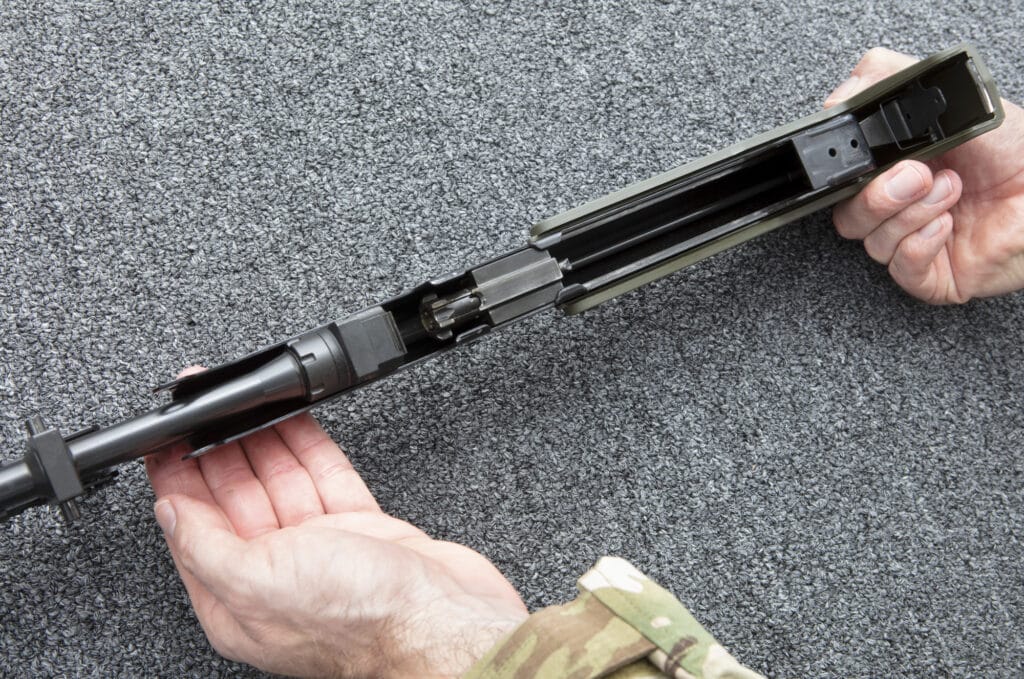
Soon, additional variants of RDB were offered. Unlike the RDB17, the later Hunter and Survival versions use a button magazine release. The RDB Hunter is a very clever, non-pistol grip rifle weighing just under seven pounds despite the longer 20.5-inch barrel. The unusual-looking stock is very comfortable for deliberate, aimed fire because the strong hand goes right around the bore. The RDB Survival version is even lighter at 5.8 pounds, with a lighter-weight 16.1-inch barrel topped with some of the most unusual folding iron sights ever. The rear sight is a range-adjustable peep, the front is an extensively hooded folding post of a very unusual appearance. Unfortunately, the front sight tower uses barrel threads, so adding any muzzle devices requires a thread extender or sacrificing the long iron sight radius. To reach the 26 inches required by federal regulations for non-NFA rifles, the RDB Survival uses a variable-length stock. A simple pull on the buttstock extends it by 1.75 inches and locks the extension in place. The pivoting release paddle is underneath the buttplate, pressing it lets the stock collapse back to its transport mode with 14.25-inch length of pull. Since the buttstock is integral with the cheek rest, this works very well with red dot sights but can require a head position adjustment when aiming with magnified scopes, putting the cheek close to uninsulated receiver top near the chamber. A non-issue for slow fire but a concern for high volume shooting.
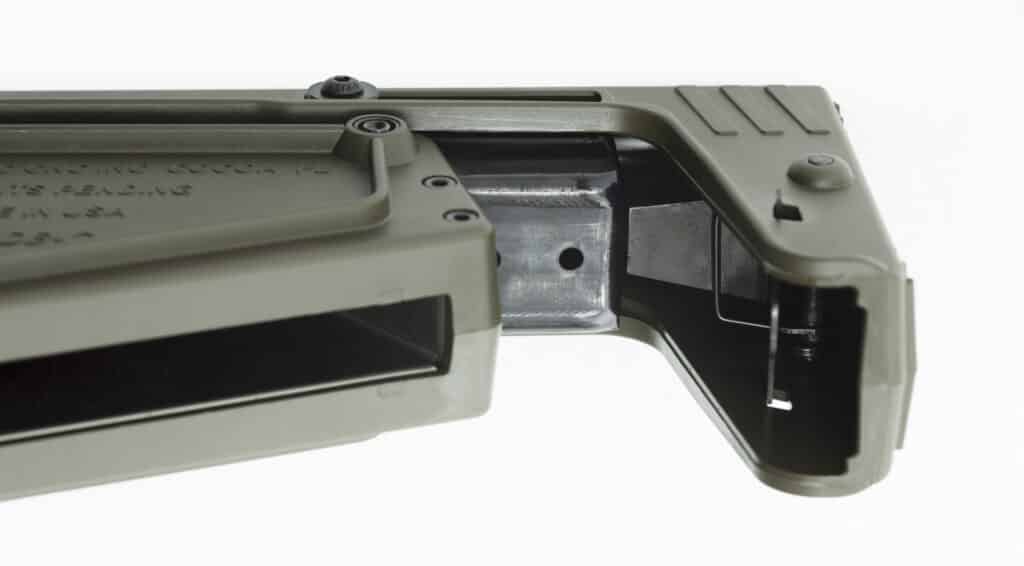
After taking in user feedback and the results of internal testing, KelTec rolled out the most current variant, the version we’re covering, the Defender. It comes with the adjustable-length stock taken from the Survivor model: for supported positions, the extra length of pull comes in handy, but it can be minimized for shooting in body armor. The muzzle of the lightweight 16.1-inch barrel is threaded and comes with an A2 flash hider. The folding charging handle has been replaced with an easier-to-deploy low-profile part. The more ambidextrous paddle magazine release is back. The most visually prominent feature is the 270-degree M-Lok aluminum forend that extends almost up the muzzle. Together with the Picatinny top rail, it gives many options for placing lights, lasers, bipods, and other accessories. The first obligatory accessory must be a sling swivel or a QD socket to replace what the RDB17 polymer forend used to provide. At only 6.7 pounds, the RDB Defender is light, accurate, reliable, and handy. It can be effectively shot with one hand. Even with a sound suppressor attached, the rifle remains well balanced. Accuracy is slightly below that of the RDB17, but the difference is minimal: still favoring heavy match loads, the Defender gets up to 1.5-MOA in competent hands. Magazine changes speed up nicely with an add-on competition magwell funnel from the KelTec store. A 20-round Magpul magazine is included.
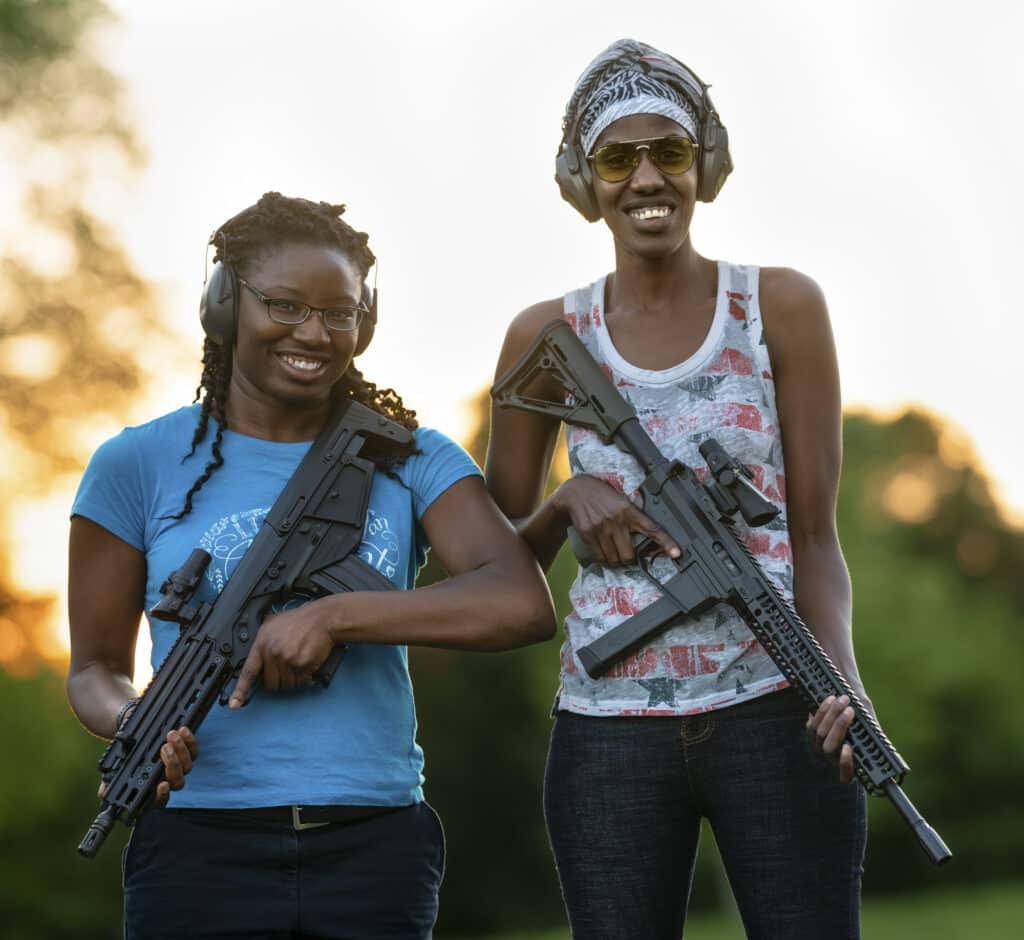
Does this rifle have disadvantages? Sure. The bottom ejection puts hot brass right next to the strong-side elbow of a prone shooter or in the lap of a sitting shooter. Annoying, true, but less so than having side-ejected brass bounce into your face from a range partition. Wear long sleeves and pants when shooting the RDB from supported positions! All RDB models are highly reliable, but the bolt overtravel produces a very unusual malfunction if the rifle short cycles due to a weak round or gas regulator set too low. The bolt goes back past the magazine but not far enough back to operate the dual spring-loaded ejectors. The spent case returns forward with the bolt and picks up a live cartridge from the magazine. The boltface then grabs a second live round and you have a triple-feed. It clears instantly by removing the magazine and manually running the charging handle, but people unused to the rifle first try to clear it with the charging handle alone. That’s about it for the gun’s negatives – the rest of the experience is all-positive. Having run the RDB in high round count training courses, I’ve come to appreciate its mild recoil, high accuracy, and ambidextrous controls. It’s an easy gun to clean, with all furniture kept in place with three captured push pins. Shooting suppressed is pleasant, as gas blowback is minimal and channeled away from the face. The RDB can be operated from either shoulder, one-handed if necessary. It’s one of the least expensive 5.56mm bullpup rifles on the market but one of the most fun to shoot.
SPECIFICATIONS
Make: KelTec Weapons
Model: RDB Defender
Caliber: .223 REM
Overall Length: 27in
Weight (unloaded, w/mag): 6.7lb
Mag Capacity: 30
MSRP: $1300
URL: keltec.com



